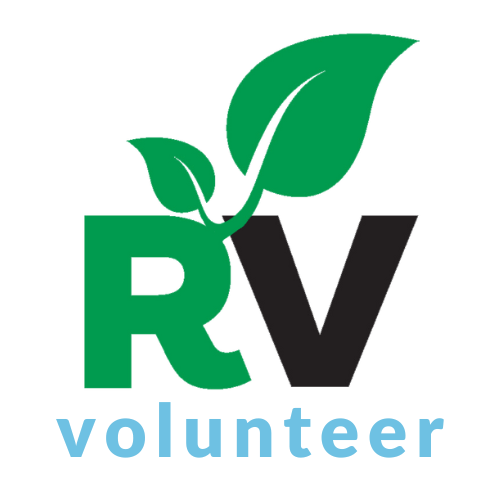Written by Marcia Geyer and Bryan Dunning, co-project leaders of the initiative for the 350 Charlottesville Albemarle chapter of 350.org
The views and opinions expressed in this article are those of the authors and do not necessarily reflect the views or positions of Resilient Virginia.

More rapid temperature increases in the Arctic and the Antarctic are causing powerful, dangerous, new weather patterns. As climate change warms the poles faster than the rest of the globe, extreme cold breaks out of its normal containment at the poles more often, pushing frigid air further south into the unprepared mid-Atlantic and the southern states, in outbreaks that last longer than formerly. These polar vortex episodes are more easily triggered in the latter months of winter when their control systems weaken and transition toward spring. The El Nino effect this winter is expected to amplify the polar vortex’s colder, snowier effects in the eastern states.
In the mid-Atlantic and southern states, including Virginia, the expensive insulation of natural gas transmission lines has not been considered strictly necessary — insulation that northern states routinely have done because of their colder winters. But the advance of climate change is changing what is necessary to keep the grid functioning. Very cold temperatures cause peak user demand. When water vapors in the transmission lines freeze, they often block gas from flowing in transmission lines and the gas well extraction equipment may freeze up. The grid is thereby starved just when it needs more fuel to handle peak demand. Grid outages result, not spotty, like when trees fall on power lines, but over wide areas and long lasting, until the weather thaws the lines and equipment, or enough power can be imported from regions with a healthy grid.
“We, in the PJM district of the grid that includes Virginia, are at substantial risk of major grid failures from a polar vortex this winter and going forward,” according to FERC, the agency that last reported – new warnings – about the grid’s health. The warnings were promptly reported and authoritatively further discussed by experts, but during a busy political news season that kept the danger from being highlighted as top news. See the Nov. 16, 2023 report from FERC, the federal government’s grid oversight agency: FY2023 Report on Enforcement | Federal Energy Regulatory Commission (ferc.gov).
FERC highlights that in 2021, winter storm Uri – the storm that impacted Texas and caused more than 200 deaths – and 2022’s widespread winter storm Elliot, which resulted in the deaths of upwards of at least 70 people from Texas to the Northeast, led to unplanned outages of 61,300 MW and 90,500 MW, and required emergency closure of natural gas facilities across the southeast.
Public health officials cautioned that the associated deaths are quite likely underreported because they only include a collection of death certificates which list only hypothermia as the primary cause. (See, for example, Wisconsin Environmental Public Health Tracking Program (2020). Extreme Cold in Wisconsin: Trends, Surveillance, and Protection.) Extreme cold events also cause significant increases in deaths associated with asphyxiation suffered by people who lose power when they attempt, improperly, to use generators or they use their gas stoves to heat homes.
The human impact of a polar vortex, coupled with concurrent widespread grid outages, is most demonstrated by the 2021 Texas polar vortex event and widescale power outage, which has been attributed to 246 deaths in the state from cold and the storm. Most of these deaths were attributed to hypothermia on death reports, but they also include deaths from carbon monoxide poisoning from improper generator use and from fires caused by portable heating devices or other ignited materials and a few other less common causes.
In Texas the injured and deceased were people who had residences that lost access to heating, not homeless people. The elderly are particularly susceptible to harm and suffer disproportionately. In Texas 60.7% of hypothermia deaths were to people 60 years or older. The risk of death or hospitalization applies to people who have housing and often don’t imagine that bitter cold combined with power loss can be life threatening to themselves.
Additionally, homeowners have at least the option of creating their independent warming equipment (such as a fireplace or wood stove), amenities beyond renters’ control. Some of the preparations people are advised to undertake are simply impossible for renters to do. Thus, there is a financial capacity aspect to preparing and managing that systematically threatens lower income residents disproportionately, and an age aspect that threatens seniors disproportionately and in proportion to how old and how sick they are.
Loss of heat during a polar vortex combined with a power outage affects not only homes with electric heat, but also affects homes with gas heat if the gas transmission lines freeze up or if the home’s furnace is activated by with a thermostat that is electrically connected.
Local governments may find their responsibility for citizen safety during polar inversions coupled with wide grid outages to be fulfilled by sheltering the unhoused, and simply not comprehend the risks to housed people.
Local steps this winter for saving lives during a polar vortex and a wide grid outage
Local governments should create a plan to themselves provide, and collect and advertise the existence of non-governmental, warming centers and providing transportation to them if needed. A plan to publish the shelter locations that is well documented and can be communicated to the public when the situation appears to be on the horizon, or sooner. Because it is coldest at night, some overnight sheltering of people with residences that are without heat is a definite necessity to avoid preventable deaths. Cooling centers have been much more developed in Virginia than warming centers, but now increasing climate change necessitates both kinds.
Finding buildings that have a generator or solar plus batteries, and finding which would be willing to become emergency warm up centers or are government-owned buildings that local governments can designate as potential warming centers is the first task. Organizing schedules of open hours ahead of time for each potential warm up location; its staffing if staffing will be with government staff; where to call for transportation if needed; and storing supplies such as stable food and water and cots or sleeping mats and bedding are key tasks. Organizing how to get the word out through many governmental, press community organizational networks, and other information outlets, when the likely time of need is on the horizon is the last, very important. preparations step. People get information very diverse ways!
Solving grid reliability during extreme demand such as a polar vortex should become an important, ongoing federal and state governmental campaign. But grid winterization couldn’t happen fast enough to prevent the threat this winter. Reducing the original cause, climate change, is even more immense and important. Let’s do, quickly, steps that will be potentially lifesaving later this winter.
Authors
Marcia Geyer and Bryan Dunning are co-project leaders of the initiative for the 350 Charlottesville Albemarle chapter of 350.org. Their work focuses on stimulating local protections of the most vulnerable, with Bryan focusing on the technical side and Marcia doing the organizing. You can reach them at Bryan: bryankdunning@gmail.com and Marcia: marciageyer2@gmail.com.




